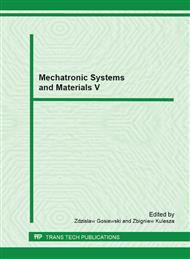p.85
p.93
p.99
p.105
p.111
p.117
p.123
p.131
p.137
Statistical Diagnostic Thresholds of Rolling Bearings with Correlation of the Bearings Signal and its Environment Based on Cauchy Product
Abstract:
During diagnostic thresholds research, sequence of numbers emerging from proper measurements, are analysed. These are sequences characterizing environment (e.g. amount of hours worked sequence x and sequence of numbers emerging from diagnostic signal measurement sequence y). Hence, two sequences exist: {x0, x1,, xm} and {y0, y1,, ym}. Relation between these sequences might be determined by Cauchy product. The Cauchy product can significantly expand opportunities of applications of signal processing and analysis. Auto and cross Cauchy products of signals as well as quotients and subtraction result of the diagnostic and environment signals, for the standard condition and the condition resulting from the current diagnosis can be determined. These allow to make diagnostics more precise, particularly in case of small number of measurements, and low accuracy of the diagnostics thresholds determined from them.
Info:
Periodical:
Pages:
111-116
Citation:
Online since:
March 2013
Authors:
Keywords:
Price:
Сopyright:
© 2013 Trans Tech Publications Ltd. All Rights Reserved
Share:
Citation:


